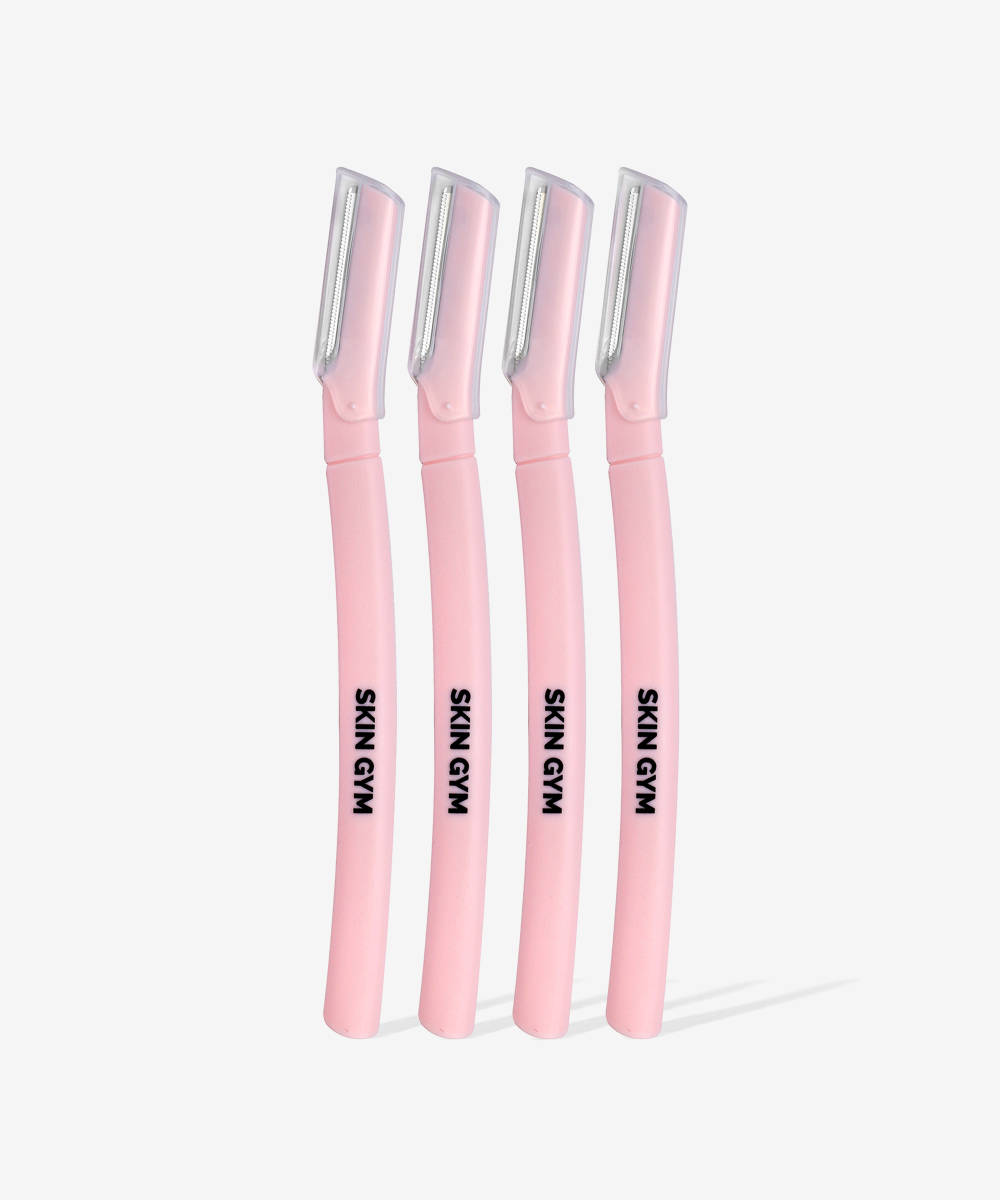Exfoliation is an integral part of every skincare routine, but did you know there are other ways to do it aside from the usual scrub and acids? Dermaplaning is a technique which involves carefully dragging a blade across your face. Sounds scary? Trust us it isn’t. The purpose of the treatment is to remove any peach fuzz, whilst simultaneously exfoliating the skin. We spoke to medical doctor and director of Joyful Skin, Kemi Fabusiwa to find out exactly what it is, what it does and how to get it right at home…
What is dermaplaning?
Dermaplaning is a form of mechanical exfoliation that gently shaves away the upper layers of dead and dying skin cells using a surgical scalpel.
The benefits of dermaplaning
Like all exfoliating treatments, the main purpose of dermaplaning is to slough off old, dead skin to improve the texture and tone of your complexion. Kemi explains it also has some other benefits: “Dermaplaning increases cellular turnover and paves the way for younger, fresher skin underneath. It also removes facial hair, stimulates collagen production and allows your products to penetrate deeper into the surface of your skin. Results are instant so your skin will look revitalised straight away.”
The best dermaplaning tools to use at home
Is dermaplaning safe? Can anyone have it?
Straight to the point: yes, dermaplaning is safe and pain-free. But for anyone with reservations, Kemi suggests that those with sensitive skin should dermaplane with caution as the treatment can cause “slight irritation and redness.” She adds: “It is safe, but care must be taken when carrying it out so you don’t irritate the skin and damage your moisture barrier.”
Although one of the benefits sometimes raised is that dermaplaning is a miracle cure for scarring, Dr Kemi stresses the importance of avoiding dermaplaning if you have acne or any other skin conditions. “Those who already have breaks in the skin i.e. sores, open wounds or acne shouldn’t be dermaplaning as this can exacerbate the wounds. It is also important to avoid waxing, exfoliating acids or retinol before the treatment as these will pre-sensitise your skin and can lead to irritation.”
The pros and cons of dermaplaning
Before you grab the dermaplaning tool and start shaving, it’s worth considering some of the pros and cons of dermaplaning your skin:
Pro: Hairs don’t thicken – Despite the rumour mill, facial hairs don’t grow back thicker and darker after dermaplaning. They simply grow back the same as before.
Pro: Endless benefits – As well as leaving your skin smoother and brighter to improve texture and tone, dermaplaning also stimulates collagen production and allows your skincare products to penetrate deeper.
Pro: Quick and painless – Trust us when we say dermaplaning is completely painless, as the blade simply glides over the surface of your skin to remove hair and dead skin cells.
Con: It’s not for everyone – If you have active acne, cold sores, or extremely sensitive skin, dermaplaning may not be the skin treatment for you as it can cause irritation.
Con: Results are temporary – Unlike other hair removal treatments, dermaplaning is only temporary. But with the right home dermaplaning tools, it’s easy to stay on top of.
Con: Results may differ – Depending on your skin’s condition, age, and hair thickness, the results of dermaplaning can differ from person to person.
How to do dermaplaning at home
Dermaplaning at home is really simple if you have the right tools and skin prep in tow. Simply follow the five steps below for smoother, brighter skin straight from your own abode.
Step 1: Firstly, make sure your dermaplaning blade is clean.
Step 2: Cleanse your face before patting it dry.
Step 3: We recommend working in small sections, so start on one side of your face and hold the skin taut with one hand.
Step 4: Hold the dermaplaning tool in your other hand at a 45-degree angle. Then, gently move the tool in a downwards motion and in small strokes.
Step 5: When you’ve moved across your whole face, simply moisturise and add a hydrating or soothing serum of your choice.
What to use after dermaplaning
How often should you dermaplane?
It’s recommended to dermaplane every 1-3 weeks as it’s a more intensive form of exfoliation. It physically removes the outermost layer of skin, so excessive dermaplaning can potentially cause irritation. Be sure to keep your blade clean and replace it when needed.
How long does the dermaplaning last?
The results of dermaplaning are immediate and should last around two to four weeks, leaving skin looking smoother and brighter during this time. After two to four weeks, new skin cells will become dead and build up on the surface again.
How long after dermaplaning can you wear makeup?
It’s recommended to go makeup-free for at least a day after dermaplaning. This is because your skin barrier is more open and may become more easily irritated.
FYI: This article was previously published and has been updated








